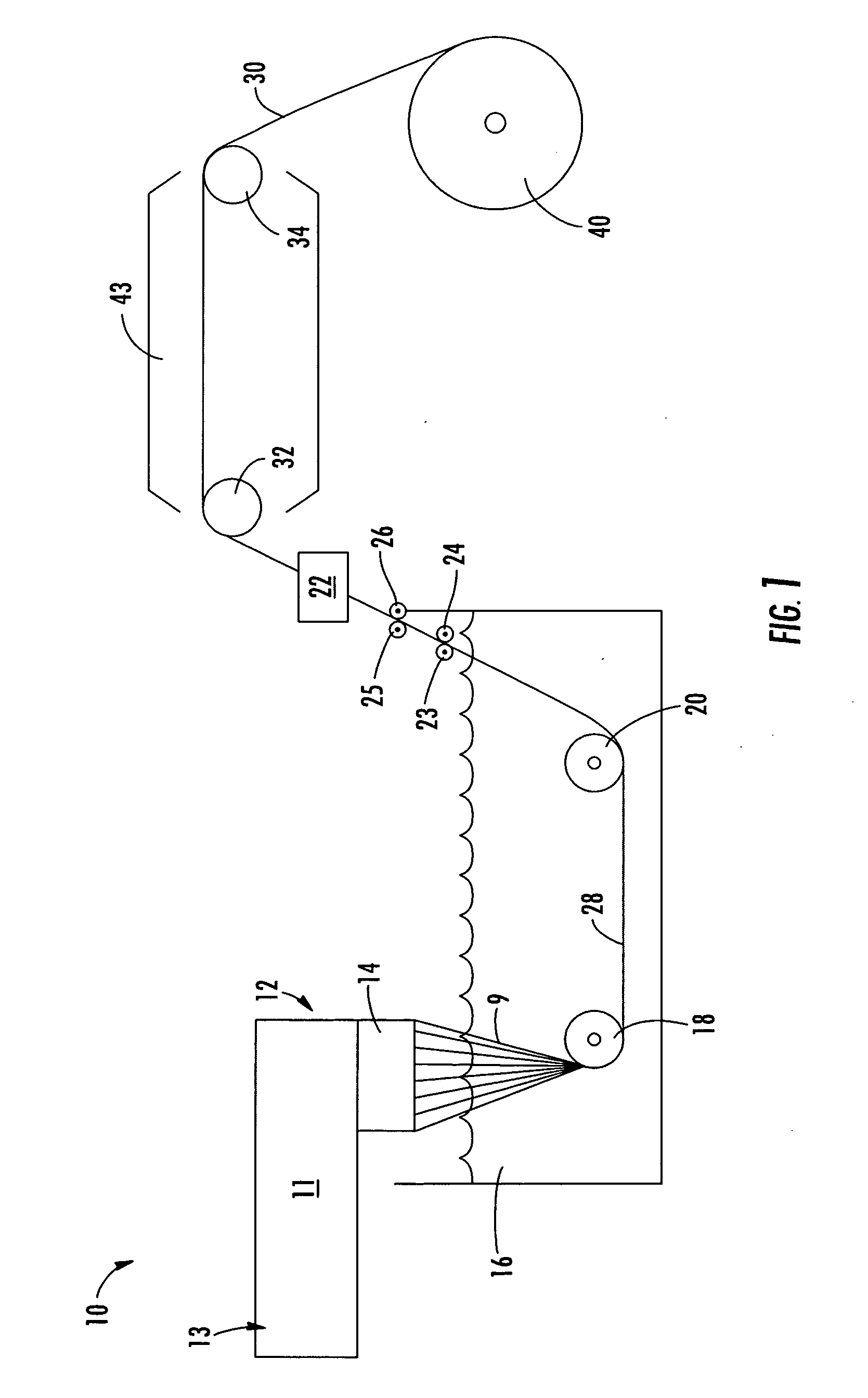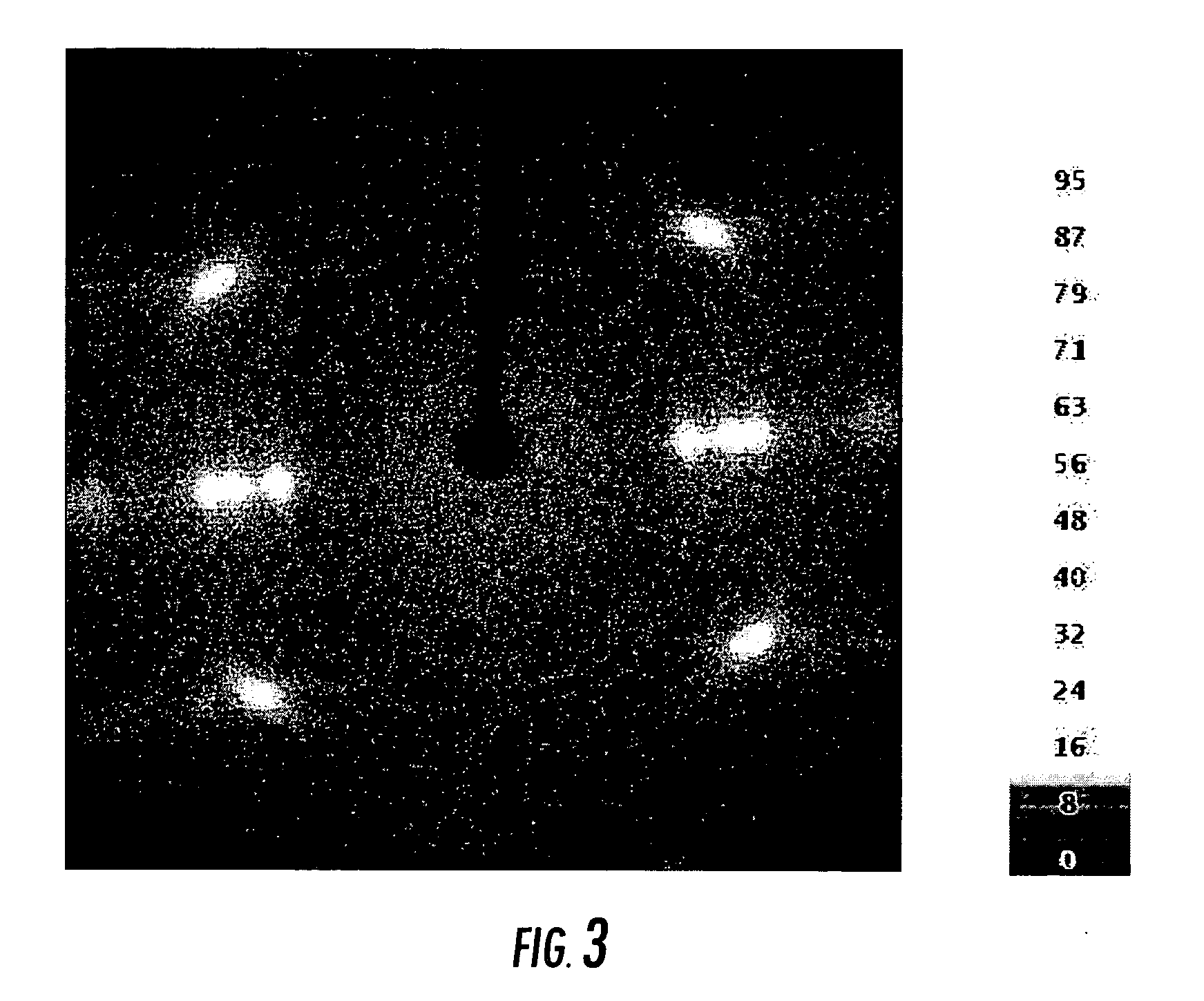Melt-spun multifilament polyolefin yarn formation processes and yarns formed therefrom
a multi-filament polyolefin and polyolefin technology, applied in the direction of selective content distribution, transportation and packaging, synthetic resin layered products, etc., can solve the problems of inability to produce high modulus, high tenacity multi-filament yarns of similar materials, and failure to achieve high modulus
- Summary
- Abstract
- Description
- Claims
- Application Information
AI Technical Summary
Benefits of technology
Problems solved by technology
Method used
Image
Examples
example
[0069] Yarn samples were formed on system similar to that illustrated in FIG. 1. In particular, the system included a ¾ inch, 24:1 single screw extruder with three temperature zones, a head with a melt pump and spinneret, a liquid quench tank (40 inch length), with two rollers in the tank, a vacuum water removal system, a spin finish applicator, three heated godet rolls, a forced air oven (120 inch length) and a Leesona® winder.
[0070] Materials utilized in forming the yarns included Atofina® 3462, a polypropylene homopolymer with a melt flow index of 3.7 and Atofina® 3281, a polypropylene homopolymer with a melt flow index of 1.3 (both available from ATOFINA Petrochemicals, Inc. of Houston, Tex.), a 10% concentrate of a nucleating agent composition, specifically Millad® 3988 (3,4-dimethyl dibenzylidiene sorbitol) in a 12 MFI polypropylene homopolymer (available from Standridge Color Corporation, Social Circle, Ga., USA), and a polyethylene homopolymer with a melt flow index of 12 (...
PUM
| Property | Measurement | Unit |
|---|---|---|
| Length | aaaaa | aaaaa |
| Length | aaaaa | aaaaa |
| Length | aaaaa | aaaaa |
Abstract
Description
Claims
Application Information
 Login to View More
Login to View More - R&D
- Intellectual Property
- Life Sciences
- Materials
- Tech Scout
- Unparalleled Data Quality
- Higher Quality Content
- 60% Fewer Hallucinations
Browse by: Latest US Patents, China's latest patents, Technical Efficacy Thesaurus, Application Domain, Technology Topic, Popular Technical Reports.
© 2025 PatSnap. All rights reserved.Legal|Privacy policy|Modern Slavery Act Transparency Statement|Sitemap|About US| Contact US: help@patsnap.com



